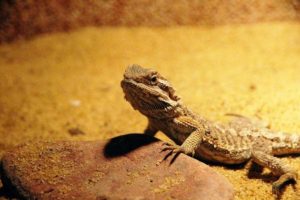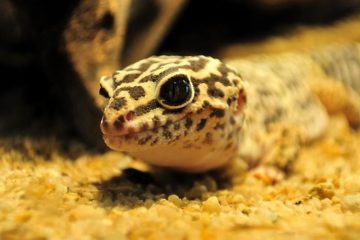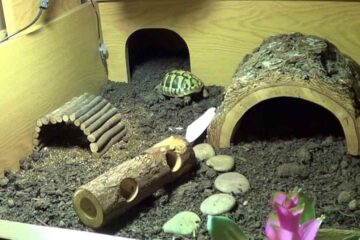It’s a question that comes up often, but one that not everyone bothers to ask.
In fact, many novice terrarium hobbyists despair of getting their first lizard or other reptile without knowing what they need, whether it’s their terrarium, the equipment that goes with it, or in this case: The substrate.
Sommaire
What is a terrarium substrate?

The substrate is the base on which plants grow in the case of terrariums for plants (but not only), or the base on which Reptiles or amphibians live in your vivarium. Some are suitable for animals living in arid areas, others for those living in humid areas, and many other factors.
But what are the right ones for a Pogona?
Although we have already covered this topic in our pogona care guide, which I invite you to read, here is a little guide that will answer the question.
What substrate for a Pogona vitticeps (Bearded Dragon)
Pogonas are reptiles that live in arid, semi-arid and even desert areas, and it goes without saying that their biotope must be representative of their natural habitat: arid.
Substrates suitable for a Pogona :
Now that you know which substrates are suitable for your agama(s), let’s take a closer look at them and find out why you should choose one over another.
Desert Bedding
This substrate has several special features that make it the number 1 choice for your bearded dragon.It has a high clay content, ideal for recreating this reptile’s initial environment. It is very fine, which drastically reduces the risk of intestinal obstruction in case of accidental ingestion. And finally, it is dust-free, so your pogona will be able to burrow in it without risk of suffocation.(If your Desert litter looks dusty, dampen it/wash it and let it dry).
Without a doubt the best substrate for a pogona in every way!
The excavator
Like the desert bedding, this is a substrate that is perfectly suited to the pogona, and for good reason: it perfectly reflects its basic environment, has an adequate clay content and is very fine. It should be added that the pogona can dig in it without worrying until it hardens, changing it somewhat more frequently.
- Substrats de cage
- Permet aux reptiles de creuser des galeries et des...
- Permet de modeler et de créer des terrasses multiniveaux et...
Sopalin / Thick paper towel
Widely used for newborns and juvenile pogons in general, thick paper towels have a lot going for them.
- It allows your young and not-so-young pogonas to hunt clearly visible prey.
- The droppings are quickly identifiable, which makes them a hygienic “substrate”.
- Avoid any risk of ingestion of substrate such as sand (calcium or not).
Note that some breeders also use linoleum for the same reasons.
Non-powdery fine sand (pro)
It is very important that it is not dusty and that it is not sand picked up just anywhere. This type of sand can be found online or through professionals.
This is sand or a mixture of sand and clay with as little organic matter as possible so as not to encourage the growth of bacteria that could harm your bearded agama.
This type of substrate will not, however, be representative of the original living environment of the bearded agama.
⚠ Warning ⚠: Many breeders use “classic” sand, which is dangerous for pogonia, especially juveniles!
Although many make this mistake, don’t copy them and help them change!
Substrates to avoid for a Pogona
While there are many substrates that are ideal for Pogona Vitticeps or Henrilawsoni, others are much less so. Some are simply inconvenient and difficult to maintain, but others can be extremely dangerous! Here is a non-exhaustive list of substrates that are not recommended for this reptile.
Unsuitable substrates for a Pogona :
Classic sand
Conventional sand found on the floor or elsewhere often contains a large number of bacteria that are harmful to your reptile. Opt for disinfected sand, such as that used in dust-free children’s sandboxes.
Calcination
This particular sand, as the name implies, contains calcium. It is a dangerous way to compensate for any calcium deficiency in your pogona.
Many breeders have reported intestinal obstructions in their reptiles, which almost always lead to the death of the lizard. This is because bearded agamas take a liking to this sand when they feel a lack of calcium. It should be avoided.
Bark and wood chips
These two very similar substrates have a number of shortcomings:
- Some of the shavings do not contribute to the aridity of the environment
- It is more common for bacteria to grow there than in desert bedding for example.
- Again, the most dangerous of reasons: the risk of ingestion leading to obstruction of the stomach. And almost certain death.
Conclusion
As you will have seen throughout this guide, choosing a substrate for a pogona is no easy task. Between health risks, hygiene and comfort, you must choose carefully and be aware of the dangers that await your bearded dragon.
Feel free to leave your questions or other messages in the comments! More and more breeders are visiting the site frequently and can advise you on what is best for you ;).


0 Comments